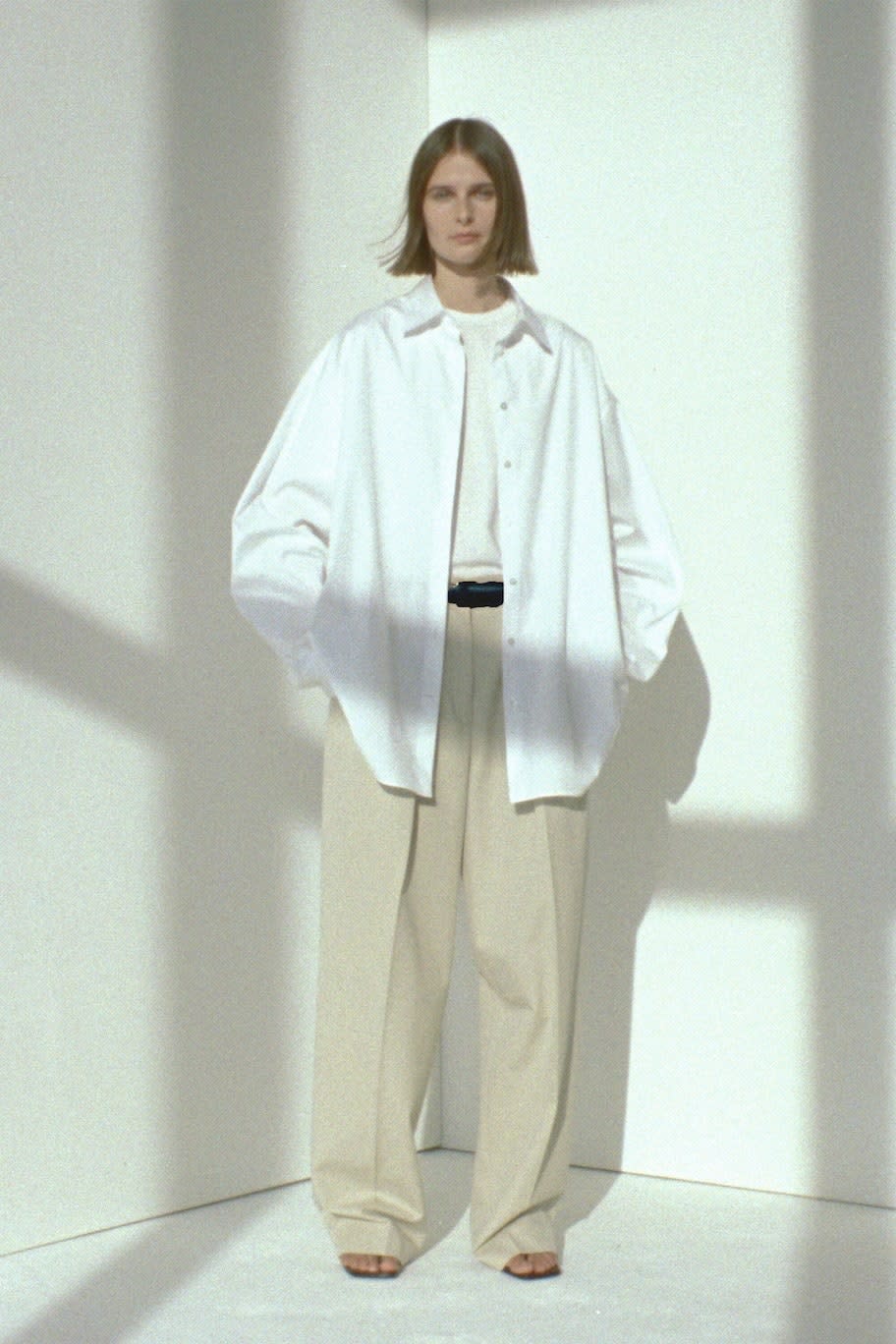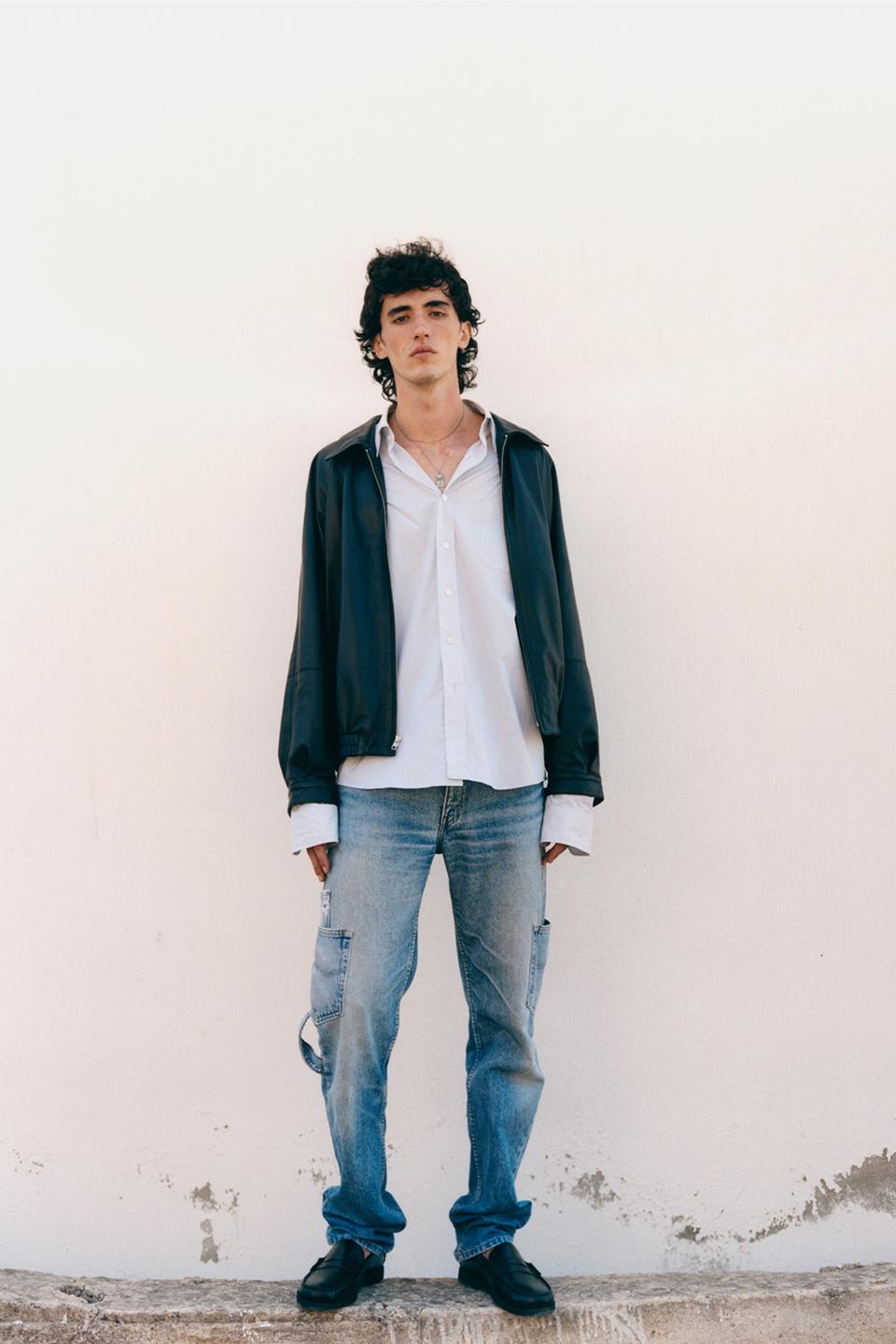This Fall, Dress Like You're in a '90s J.Crew Catalog
Before J.Crew was bankrupt—before it was even an ascendant force in menswear—J.Crew was a catalog business. It was established in 1983, and seven years later their lush picture books were hitting the mailboxes of three million potential customers at the frequency of fourteen times a year (12,000 on Manhattan’s Upper East Side alone, J.Crew’s founder and then-chairman Arthur Cinader boasted). By 2005 the circulation was at 55 million with 20 annual editions, with a nascent internet nipping at its heels. Today, fans wax poetic about these brochures: the friendly, scrubbed (and, it should be noted, almost exclusively white) faces; the models who were attractive but not intimidating; the studied nonchalance of the styling. These mailers were revolutionary in that they didn’t just sell apparel but placed the clothes in a context of wholesome, preppy outdoorsiness. They sold you a fetching fisherman’s sweater, sure—but borrowing from a method Ralph Lauren had spent years perfecting, J.Crew also sold you the lifestyle in which it would best exist.
More than a decade after that high point, the spirit of the J.Crew catalog is back—shot, like an arrow, through the best of the just-shown spring 2021 collections. From the voluminous wardrobe staples at The Row (a womenswear brand that made some of the season’s best menswear) and the oversize pleated pants paired with slim sweater vests at Maryam Nassir Zadeh’s debut men’s collection to Margaret Howell’s very British get-on-with-it attitude and the Zen, airy tailoring at Lemaire, some of our favorite looks contained undeniable echos of this very specific vision of 90s minimalism.

“Growing up, my mom always had the catalog and it always felt nostalgic,” says Nicole Rice, who runs the popular Instagram account Simplicity City. Rice started the account as a fun side project when she worked in ad sales, and its mix of rare magazine editorials, film stills, and images celebrating the beauty in quotidien events eventually led to work as a freelance creative consultant. She often sources from decades-old magazines or little-seen editions from foreign countries like Asia and one time, while visiting the library at the Fashion Institute of Technology in Manhattan, she stumbled across some 90s-era J.Crew catalogues. “I thought, ‘Oh, I’ll glance through these to remember my childhood.’ And I was like, ‘Wow, these are so relevant.’” she said. “It’s on the same wavelength on what's going on right now. If [J.Crew] did this now, everything would sell! It’s just so good.”
Which isn’t to say it’s a tricky kind of styling, or some big statement on how we dress today. “It’s all so basic and simple,” she says. “It’s an attainable look.”
We’re living, of course, in strange times. In a way, this almost archetypal normality makes sense. While fashion ostensibly thrives on newness, a bit of the familiar can help ground us during these unstable times. In their most recent collections, many designers tried to soldier on in the face of the pandemic, and that’s swell—but most of the results felt utterly disconnected from a downright scary reality. In the face of all this uncertainty, the most successful collections offered the essentials: a really big fluffy sweater, a billowing button-up shirt, and some roomy khakis. These are pieces we understand on a visceral level—and that are, crucially, comforting in both a tactile and emotional sense. They look like the physical embodiment of the big hug we all need right about now.

It’s no accident that this look is emerging now, right as menswear giants Brooks Brothers and, yes, J.Crew have fallen. Those brands trafficked in a lost American ideal, the datedness of which is especially apparent as our country grapples with its own dark legacy. What these modern brands are propositioning is a way forward inspired by those traditional forbearers, but decidedly different: business-casual, workaday classics reworked in ways that feel intentional without being flashy. Pants, for instance, aren’t droopy, but draped in a suave, elegant way. The shirting has a gently sculpted shape. The actual garments are recognizable, but the emphasis on silhouette and proportion makes them stand out.
The look—normcore, but all grown up— savvily marries the sweatpants-heavy aesthetic to classic menswear pieces so we can feel dressed up even if we’re just lounging around the house ad infinitum, our professional lives now winnowed down to a front-facing camera. It’s taking that stuffy formality out of garments that were once meant for office life — a retread of what made Armani famous, and not coincidentally the reason why his early work feels so relevant right now. “None of us are getting dolled up and going anywhere,” Rice says. “It’s a nice alternative to, you know, wearing exercise clothes and sweatpants, but not being ridiculous and wearing these fancy clothes. I think that's what draws people to these looks: it’s practical and could be worn every day but they’re a step up from the dumpy clothes that people have probably been wearing since March.”
This new wave is in part due to extenuating circumstances: the pandemic robbed us of runway shows but put a newfound emphasis on photography, which gave the seasonal collections a more lifestyle-y feel. Lemaire, for example, presented a video of its models walking alone or in small groups. Set against a white industrial wall and set to the sounds of shoes clacking on the ground, it evoked the faraway image of people headed to work in the morning (albeit these people who were impossibly chic). It presented a vision of the world where these clothes make sense. Similarly, Maryam Nassir Zadeh’s collection was shot outdoors in a hilly, residential neighborhood—whether in Istanbul or Silverlake was hard to say. While the tenor is certainly moodier in the MNZ look book — no smiles here! — it showed where these clothes belong: on some cool disaffected youths skipping class in some suburb. All of which is a reminder of the power of suggestion and of the communal aspect of fashion. There is a real pleasure in dressing up with your friends, for your friends.
Thinking back on those catalog glory days, Rice hits on something that feels vital right now, as we’re all dealing with forced solitude. “It’s pictures of people cooking or hanging out with friends at a vacation house. It’s like an editorial, but for every day,” she said. “Which, right now, is probably really nice for people to see.”
Originally Appeared on GQ

